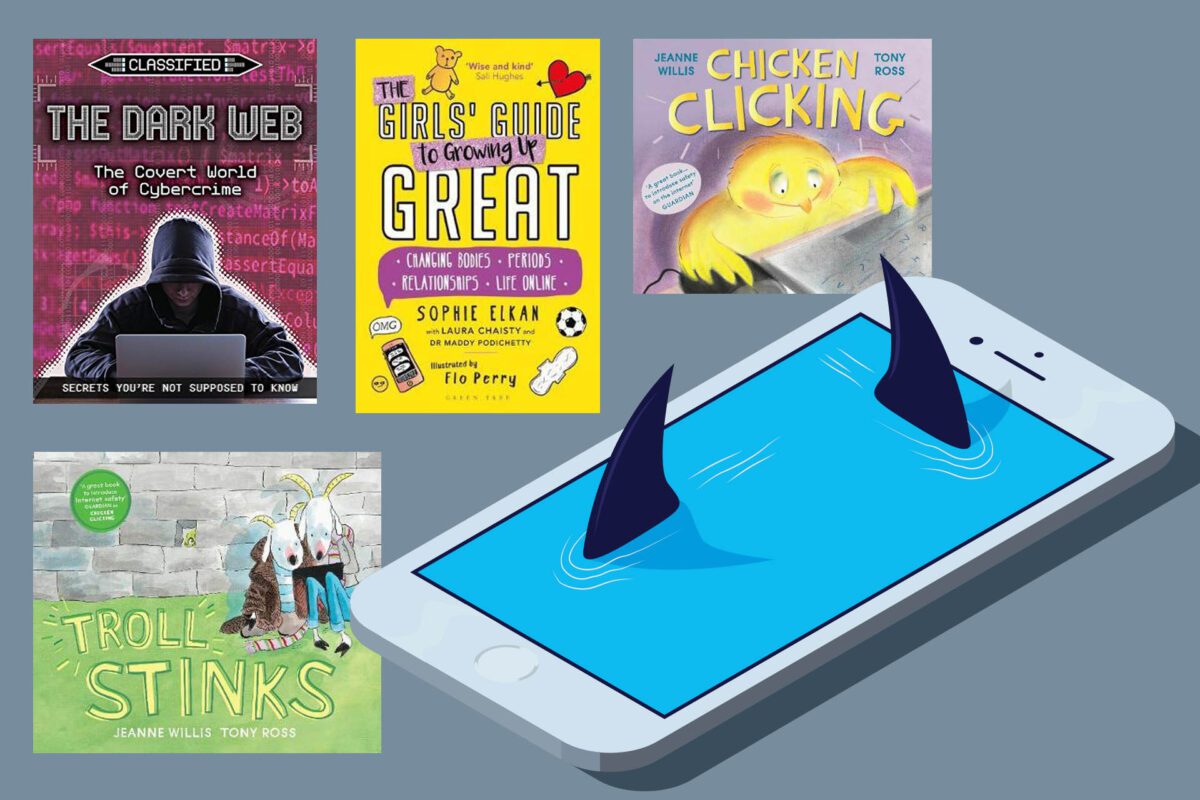Subject: New Technology
Age Group: KS1, KS2 and Secondary
Topic: Starting early with E-safety
Synopsis: Already the internet has been with us for 40 years. The majority of the population has been online for 20 years, about as long as authors started putting computers and devices into their stories. So how do picture books help children learn about E-safety asks Head of Tower Hamlets Library Service, Gillian Harris, MBE.

Gillian Harris, MBE
Tower Hamlets SLS
Librarian’s view:
I remember being delighted with Susan Cooper’s The Boggart in 1993 which is still an excellent read for 8-10-year-olds. However, there are surprisingly few picture books to use with young children on the specific issue of internet safety. It’s a difficult subject, but children are getting online younger and younger, and there are important safety messages that need to be imparted as they do. E-safety means being aware of the dangers of identity fraud, cyber-bullying and stranger danger, but it also means understanding terms such as trolling, data harvesting and echo chambers. It means being internet savvy and understanding where the information on the internet comes from, who is out there and being able to make decisions about the veracity of the information.
It’s a tall order. A lot of adults find it difficult to discern fact from fiction or opinion, and we know that fraudsters and scammers would not persist in their crimes if they were not successful is extracting vast amounts of money from unsuspecting victims.
The best defence is knowledge and information, and the earlier we start these sadly necessary lessons the better. I start here with some picture books, mostly by the indefatigable Jeanne Willis, of fables for modern times, and then look at a few other books that present the information children need in a more traditional way.
It might be deemed unnecessary to have books on such topics when you have the internet available, but books are still an excellent tool for children to learn independently, to find out things for themselves without having to ask, and at least the books here are edited, reviewed and published by reputable publishers and so are an antidote to the plethora of misinformation and disinformation children find on the internet. The skills children use to find and use books in a library are just as valid in the online world. Knowing and articulating what you want to find, devising a search strategy, assessing and selecting the most appropriate from what has been found, and evaluating the search strategy applies to both print and online information, as does knowing where information is coming from, the date it was produced and who produced it. Tower Hamlets Schools Library Services’ Library, Information and Research Skills Scheme of Work takes three simple objectives per term and offers sample lesson plans to teach. Find it at www.towerhamlets-sls.org.uk/infoskills

Picture Books – Cautionary Tales
All these stories can be used in the KS1 and KS2 classroom to initiate discussion of the issues they raise. The beauty of using these short picture book stories is that you can finish the story in one telling. Older children will love to recognise the traditional stories behind the caution and appreciate the nuances, whilst for younger children they are excellent funny stories with a message.
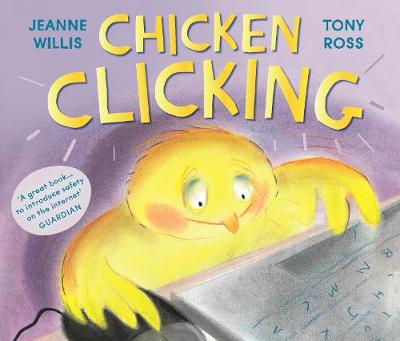
Chicken Clicking
by Jeanne Willis
A futurist addition to the range of alternative settings for a Goldilocks’ tale – every planet Goldilocks arrives at is either too cold, too hot, too slimy or too full-of-aliens – will she ever find one that is just right? Told in rhyme, the environmental message, to look after one’s own planet, can used with KS1 and KS2. Note: Snow White in Space, with a STEM theme, is due out in September 2021.

Troll Stinks
by Jeanne Willis
Goat finds the farmer’s phone and starts to have fun with it – taking pictures and selfies and making nuisance phone calls. Trolls, of course are bad – they stop goats from going over bridges and threaten to eat them, so why not send him nasty texts to get him to stop? Why not post his monster face all over social media and say he’s the ugliest thing that ever lived? They put the phone ready to take a picture outside the cave, but all they hear is sobbing – small troll is devastated by the texts she’s been getting and can’t understand why people should send her such stuff. Not all trolls are nasty goat-eating creatures, you know. A salutary tale of how trolling starts and where it can lead, but also a tale to start a class discussion of who’s nasty and who is not, what happens when you label people and the dangers of making assumptions about people.
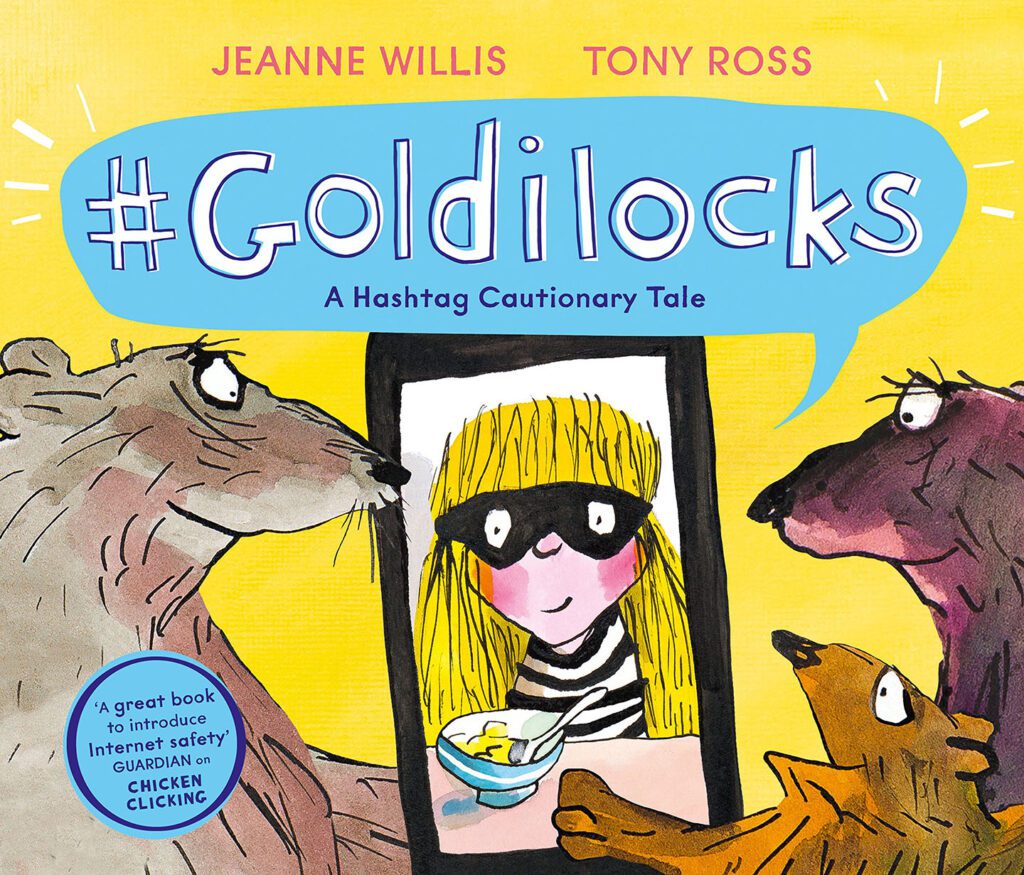
#Goldilocks: A Hashtag Cautionary Tale
by Jeanne Willis
Goldilocks likes to create hilarious videos which she posts online and get lots of “likes”, but she wants more laughs and more likes and devises more daring escapades, such as stealing porridge and breaking chairs. Following on from Chicken Clicking and Troll Stinks, this is another cautionary tale for the young internet user on the perils of going too far to seek the approval of one’s peers. Use it with any age children to discuss at different levels the pitfalls of too much internet / social media use.

Dot.
by Randi Zuckerberg
Written by Mark Zuckerberg’s sister, one likes to think in retaliation for the apparent global takeover by Facebook, this is a lovely short poem in picture book form that is an antidote to too much screen time. Dot knows a lot about how to use computers, she can tap, touch, tweet, tag, surf and swipe, but when mum sends her outside to get a break from the screen, she discovers real-life tapping, touching and surfing can be so much more fun.

Non-Fiction
These titles, starting with two for younger children, are ideal supplements to the stories above to give children more insight into the issues raised.

Staying Safe Online
by Ben Hubbard (Our Digital Planet series)
Very simple, clearly worded introduction to the world of online information that looks at good practice when using social media, avoiding cyber bullying and how to be a good digital citizen.
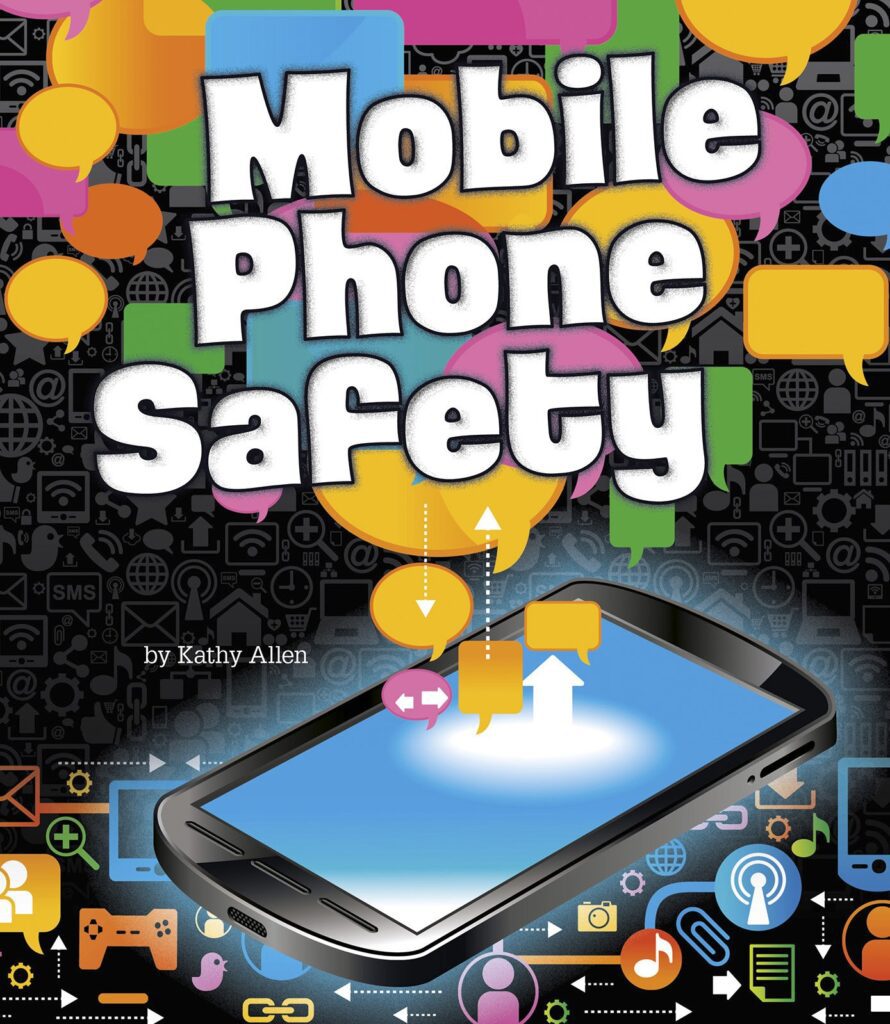
Mobile Phone Safety
by Kathy Allen
Aimed at young mobile phone users of primary school age, this book from the Raintree Fact Finders’ series covers internet and social media use, guarding your privacy, and raising awareness of basic safety measures everyone can take to stop fraud, bullying, stalking and other crimes.

Super Social Media and Awesome Online Safety
by Clive Gifford
This begins with fairly simple information about how social media developed and its different forms, with facts, dates and true stories before discussing the business of social media and the role of advertising, privacy and cyberbullying. It’s from the Get Ahead in Computing series.
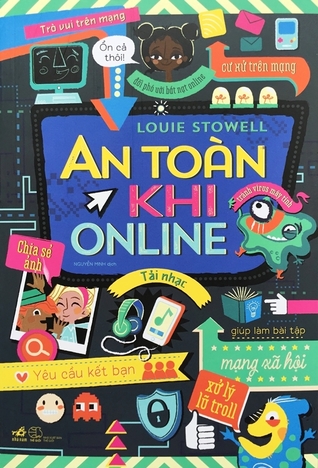
Staying Safe Online
by Louie Stowell
Published in 2016 this starts with an E-safety quiz, and goes on to give advice about password security, online manners, preserving reputations, cyberbullying, sexting, porn and harmful adults, and how to get help. It also gives valuable information to dissuade the copy and paste generation from copying too much and has hints on how to avoid spending someone else’s money online.

Safe Social Networking
by Heather E. Schwartz
The American-ness of this book does not detract from its usefulness! Aimed at under 13s, it discusses the consequences of ill-considered use of social media and the lasting impact it can have. It also suggests ways to stay safe and have fun online. Other titles in the TechSafetySmarts series are Cell Phone safety, Cyberbullying and Gaming Safely.
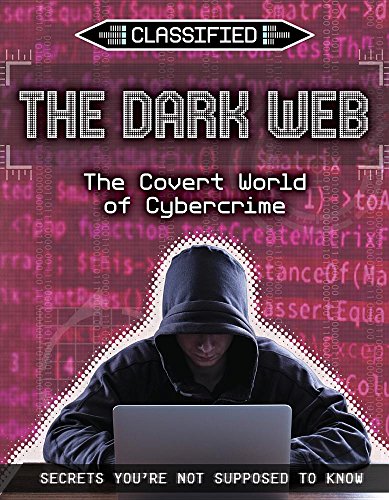
The Dark Web: the covert world of cybercrime
by Anita Croy 2019
Has as a subheading, the “secrets you’re not supposed to know” and looks at ID theft, extremism and terrorism, cyber warfare, the dark web and “who runs the web?” domain names and government censorship. Another in this series is Privacy in the Digital World. A book for secondary pupils and for upper primary children who can manage this level of text.

The Girls’ Guide to Growing Up Great: changing bodies, periods, relationships, life online
by Sophie Elkan, Laura Chaisty and Maddy Podichetty
This, as the title suggests, is a general guide for girls to overcome shyness, get some self-esteem and think big when it comes to careers and life chances. Part two discusses friends IRL (in real life) and family and has a section on “life online” which urges caution. It shows how your online life is hard to erase, and advises “think before you send as well as covering general aspects of social media and internet use that children need to be aware of. The book is aimed at upper primary and secondary and discusses other aspects of sex and relationships education as well. It’s designed to be a book that girls can come across and find out the mysteries of life for themselves rather than having to ask or told.

Looking After Your Mental Health
by Alice James and Louie Stowell
Another book, also for Year 6 and secondary, covering a range of issues. The chapter “on the internet” discusses the good, the bad and the ugly of social media use, explains what’s happening when you click “like” and what to do if you suspect cyberbullying.

